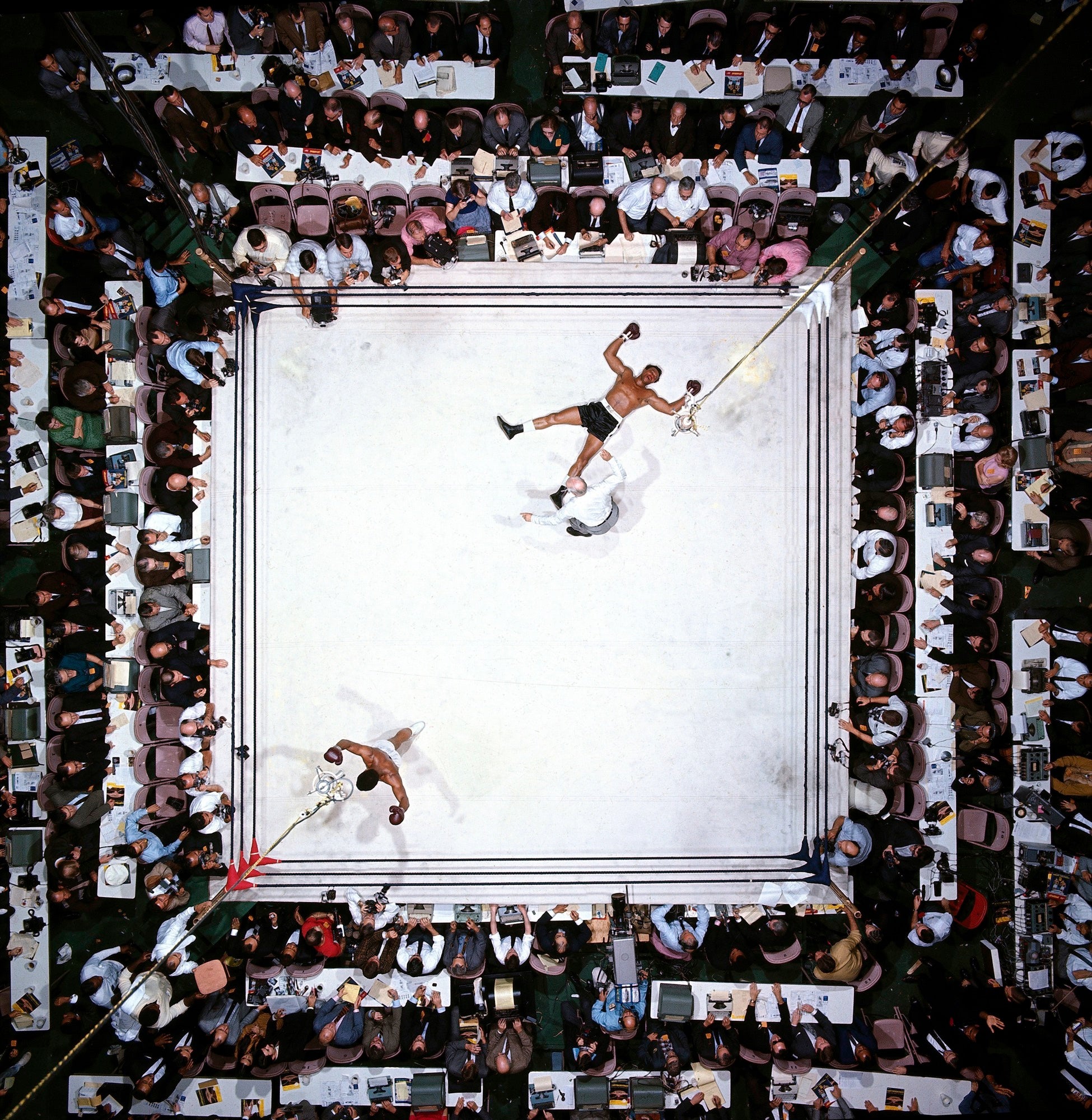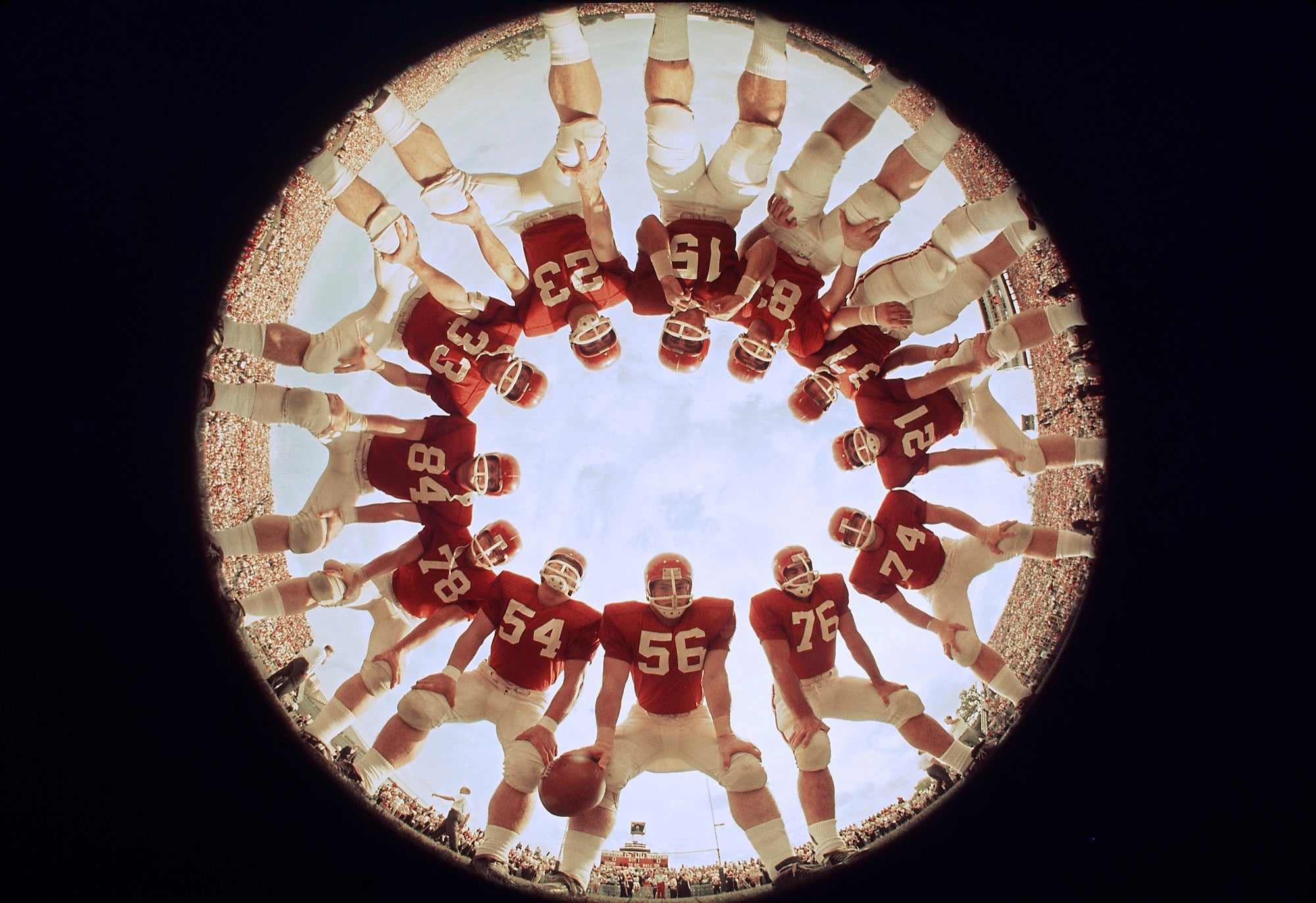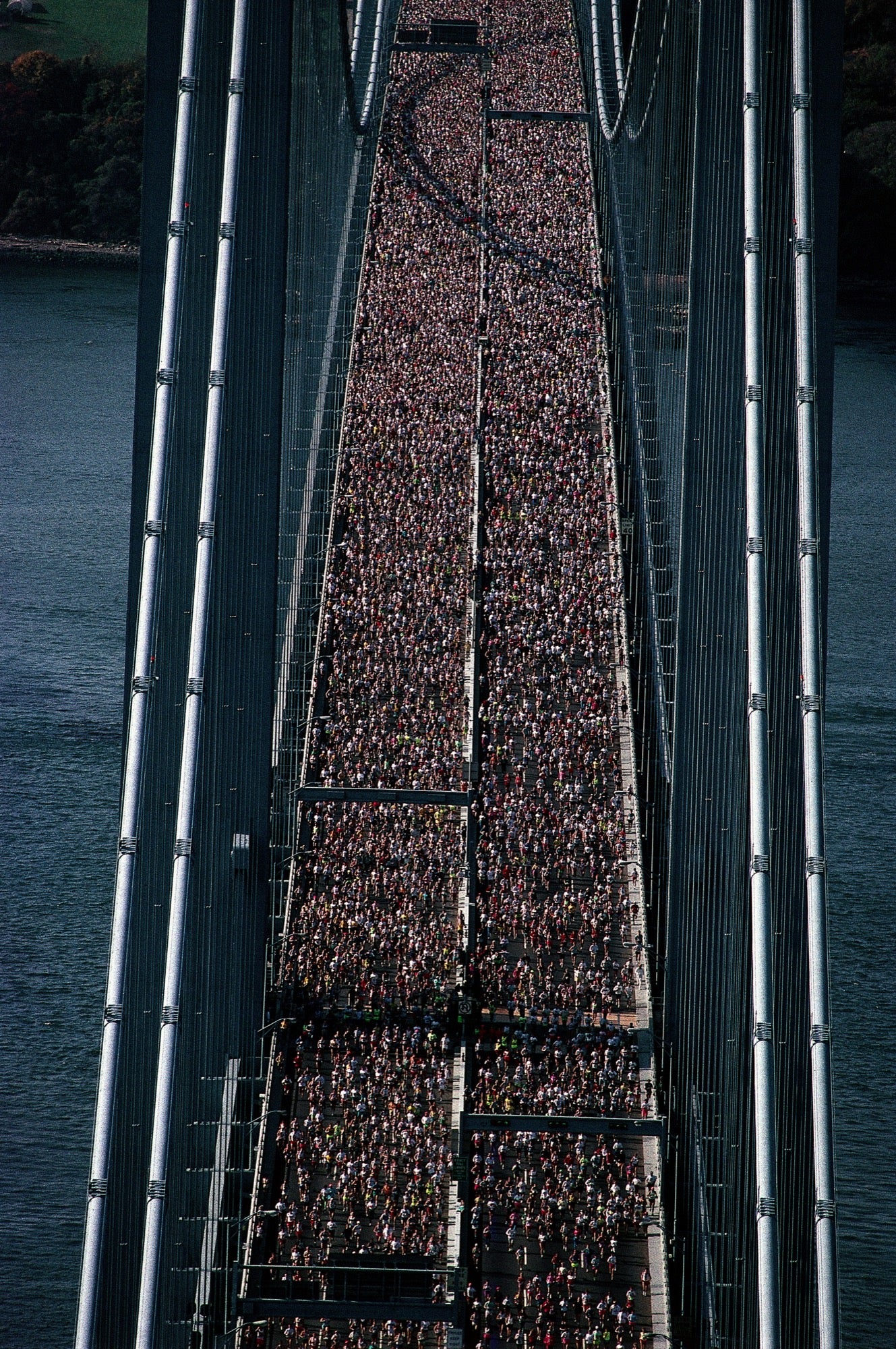Neil Leifer’s career as a sports photographer, photojournalist and, most recently, documentary filmmaker has spanned more than six decades. His love of photography began when he was a young boy growing up in a low-income housing project on the Lower-East Side of New York. Inspired by the teacher who ran a local photo club, Leifer started out shooting weekend assignments for the club and he quickly gravitated to sports.
The combination of a strong work ethic and a genuine passion for photography guided Leifer to one of the greatest cauldrons of photography talent in history, Time Inc. In his illustrious career there, Leifer shot for Time Magazine, Life Magazine and of course, Sports Illustrated. In their heyday, these publications were the primary windows to many of the great events of their age. Leifer and his fellow photographers took the photos that showed the world conflict, great stories of the triumph of the human spirit and epic contests of strength and dominance of will.
Alpha Universe had the privilege of spending a day with Neil Leifer in his mid-town Manhattan home to talk about photography, sports and the making of some of the most iconic images of all time.
Photo by Neil Leifer/Sports Illustrated
Alpha Universe: When I look at your photography over the years I find it very difficult to pin down any kind of a particular style. The way you shoot seems like it varies wildly.
Neil Leifer: You're right when you say I had no particular style. We did two kinds of assignments at Sports Illustrated. I did photo essays, where I really could shoot, for want of a better word, ‘artistic’ pictures, and I did news assignments where you want the winning touchdown, the winning home run or the three-pointer with two seconds left in the championship game. You have to photograph those as news events and you don't know what's going to happen. On the other hand, I could be doing an essay on, for example, a linebacker, like I once did when I spent six games photographing Dick Butkus. That’s a totally different approach, because I didn’t care if I got the winning touchdown. I wasn't there to do that.
I wanted to get the best assignments and to do that I had to be versatile enough to be able to deliver in a variety of different scenarios. I didn't want them to say, "Oh, Neil can't shoot the Man of the Year cover of Muhammad Ali because we need a portrait photographer in the studio." I wanted to be able to do the portrait. I also wanted to be ringside at the fight. Each requires a totally different approach.
Every assignment challenged me in some way and I think I would never have been able to get some of the assignments that I got if I was pigeonholed with a particular kind of style. In fact, as I say that, my biggest battle over my career, particularly when I moved to Time Magazine, was that I did get pigeonholed as a sports photographer. To this day people say, "Neil Leifer, sports photographer." Well, I spent 11 years at Time Magazine. I did 40 covers for Time, everything from both the president Carter and nominee Ronald Reagan and George Bush as vice president, I did both convention covers. I did the animals of Africa. I did really big military pieces.
I had really good years at Time Magazine where I covered everything from the White House, the Pope coming to America, the animals of Africa, prison, aircraft carriers. I can't count the number of different subjects. Most of them I got covers of the magazine on, but nobody thinks of that. It's Muhammad Ali and Neil Leifer as sort of a team. I loved Ali and I'm really proud of the pictures I took of him, but I did a lot of other good work that I'm equally proud of and most of it had nothing to do with sports.
Alpha Universe: What’s your favorite subject to photograph?
Neil Leifer: Oh, Muhammad. No question. My favorite subject was unquestionably Muhammad Ali and the reason is really simple; he always made me look good. He always had time. There's never been anybody like this guy, and believe me, you didn't have to be with Sports Illustrated. If a kid came by from a high school newspaper, he'd treat them the same way he treated Howard Cosell or me. If you needed 20 minutes with Ali you ended up getting 40 minutes or an hour. Well, it made it awfully easy to come back and be a hero, because you had every opportunity to get what you set out to get.
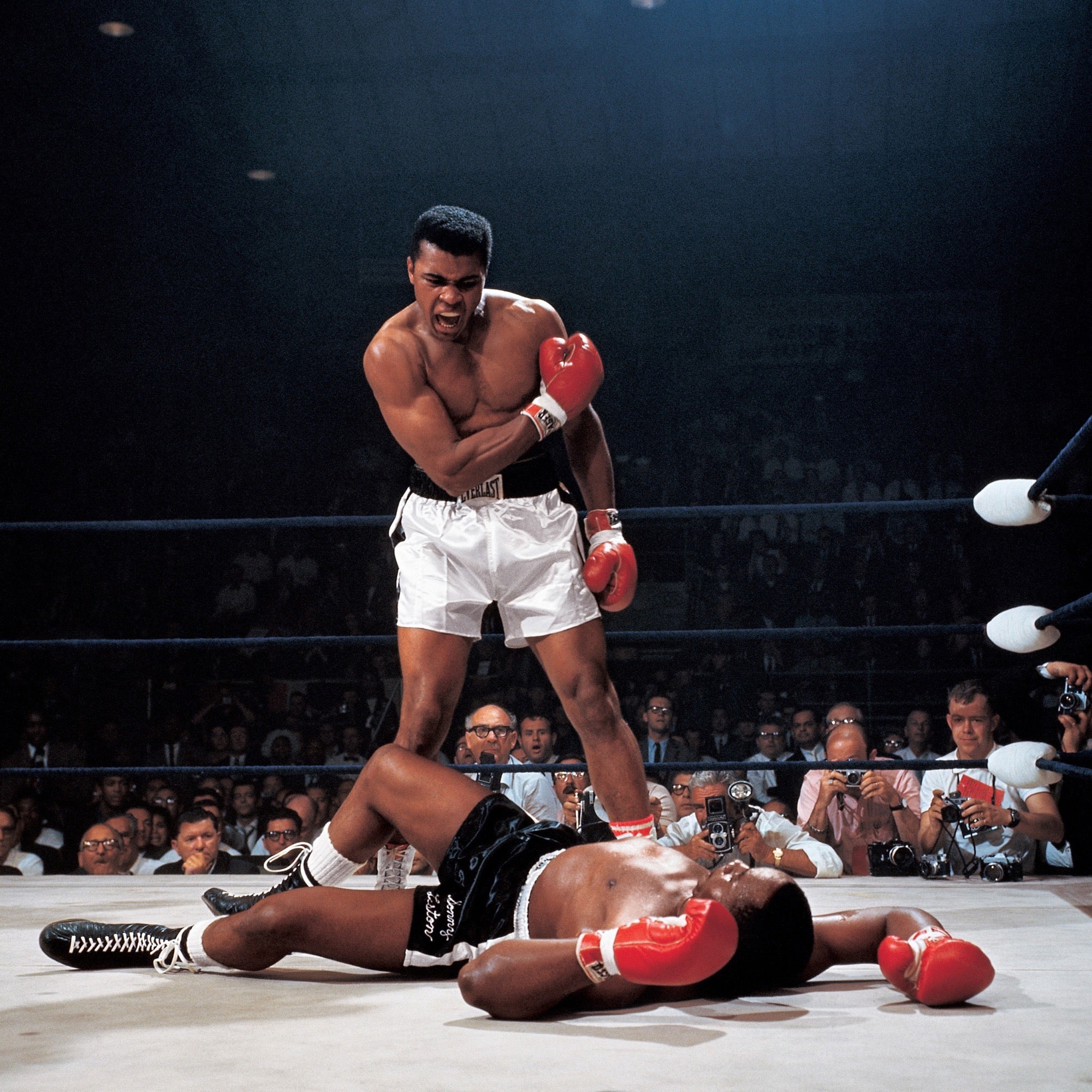
Photo by Neil Leifer/Sports Illustrated
The other subject that was my favorite…and he loved to tell people, "Neil compares me with Ali", was New York Mayor Ed Koch. He was a guy who was a little over six feet tall, bald, a little slumped over; not a handsome man by any standard. Yet the guy loved the camera! You pointed a camera at him and he lit up and you could not take a bad picture of Ed Koch. I did the Time cover on Ed Koch and that's how we became friends. Every time I photographed Koch, it was a pleasure. Because all you did was point the camera, just like Ali, and this guy did something wonderful for you.
Photo by Neil Leifer
AlphaUniverse: What drew you to sports photography?
Neil Leifer: Well, I was a real sports fan as a kid. I lived and breathed the Brooklyn Dodgers. My bar mitzvah speech was entirely about the Dodgers, and I was bar mitzvah'ed in an Orthodox temple where my mother sat behind a curtain upstairs. My entire speech was on the Dodgers finally having won the World Series so there must be a God.
I was a huge sports fan, but my father was a postal employee and we really had no money. There's no way I could afford tickets to a game. I discovered that I could take three things that I loved: sports, taking pictures, and getting them published. I liked seeing my name published. I liked seeing “photographed by Neil Leifer” on the page.
Photo by Neil Leifer/Sports Illustrated
I began to understand that there actually was a profession or a business here. I wanted to title my most recent book to be “My Ticket”. We ended up calling it Relentless. I wanted “My Ticket”, because I discovered that my ticket to the world, the things I never dreamed about doing, was my camera. My camera could give me the best seat in the house at a heavyweight championship fight, it gave me time with the President in the Oval Office, it got me flying in an F-14 and landing on an aircraft carrier.
Photo by Neil Leifer
That's what really motivated me, the opportunity to do things that interested me in a way that you couldn't buy. You can't buy a ticket on the apron in a heavyweight title fight, no matter how wealthy you are. Nobody is sitting right on the apron except the press and the television group that are around, and then the boxing commission.
Alpha Universe: What's your favorite sport to photograph?
Neil Leifer: Boxing, without question. Over the years as I started dealing with the athletes more and more, there are so many deviants in all sports, yet the nicest people are the boxers. Here are these kids from the worst neighborhoods mainly who make up a lot of the boxing world and the fact is that they are the nicest people to deal with.
I just photographed a fight in Las Vegas a couple of weeks ago. It was a big fight. Manny Pacquiao came back and fought. But I wasn’t sitting on the apron trying to get the fight as much as the ambiance and how the sport has changed. Years ago a boxing ring was stark. There was the ring, white canvas, nothing on it. Lights were straight overhead, pointed straight down, and because people were smoking cigars all through the arena, there was a haze that kind of built up by the time the main event got underway.
Today you go there and there's no smoking so there's no haze. And today it looks like a Rolling Stones concert. That's what I've been concentrating on photographing.
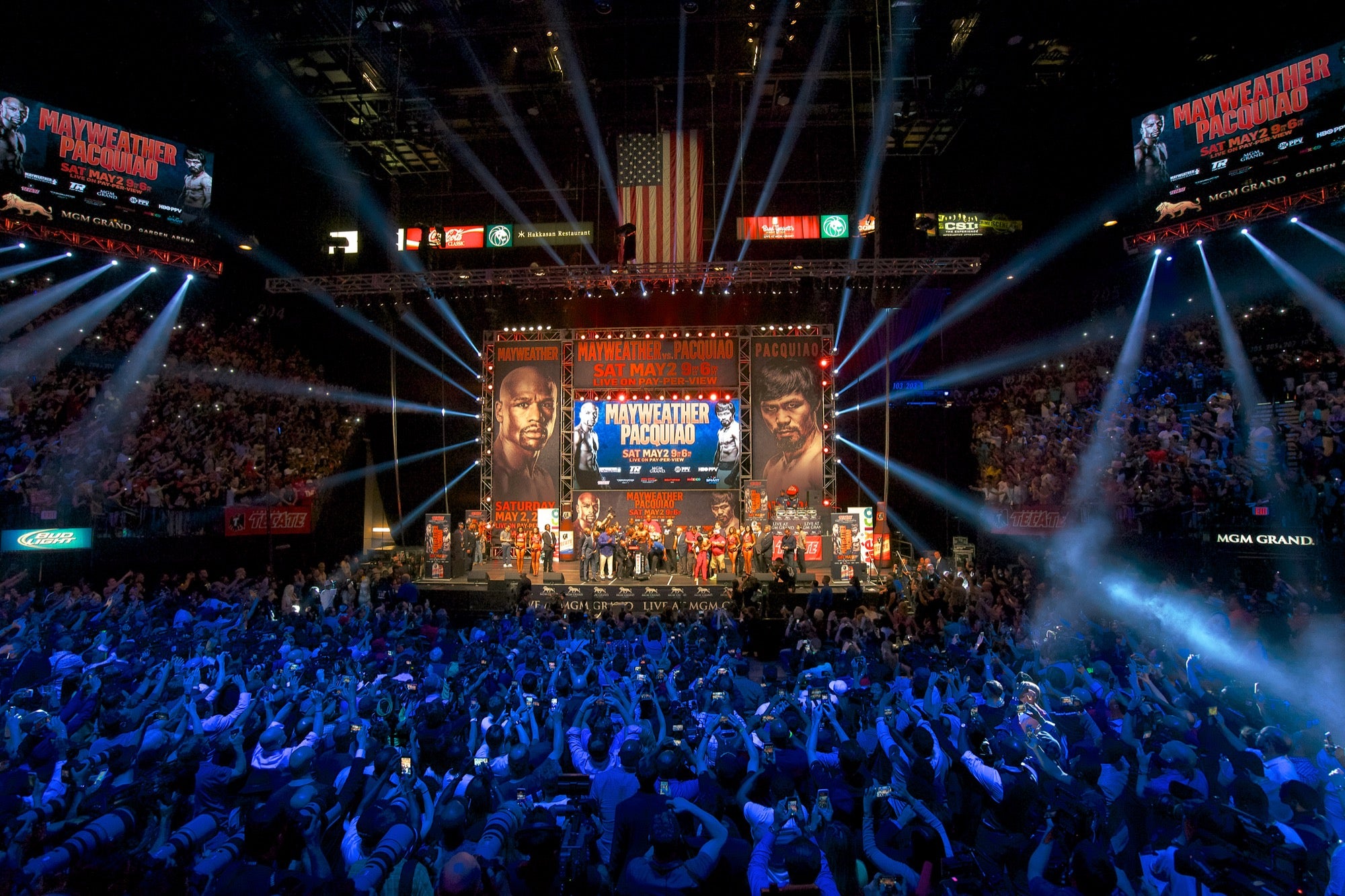
Photo by Neil Leifer/Sports Illustrated
Alpha Universe: When did you switch from film to digital?
Neil Leifer: Well, I've probably never admitted this before, but in the 1990s I was looking quietly at the digital cameras. I was afraid of them. I was afraid of them because I was not nearly computer literate enough. I'm still not.
I was very comfortable with film cameras and pretty frightened of the digital ones. I was well-aware of what kind of pictures were being taken with digital cameras. You could see a face inside a football helmet. Or if you were photographing a baseball player, the shadow cast by the beak of his baseball cap didn't matter. You could see his eyes, and the look on his face as he's throwing a pitch to home plate. The quality of boxing pictures with digital is just mind blowing. I was aware of that. I just was a little afraid. I didn't know how to use the cameras.
In 2005 I turned 62 and in New York City, 62 makes you a senior citizen. So since my birthday is the end of the year, I decided to spend the entire year in 2005 on what I called a ‘senior citizen tour’. I sold Sports Illustrated on the idea of me spending a year and going back to see how all of the events that I covered had changed. It was really a great thing for me. It was fun, because I wasn’t going to be responsible for the news. Sure, it would be great to get the winning touchdown, but who cared if I missed it?
So I started the year off in January, but I insisted on shooting film. A picture editor at Sports Illustrated, Steve Fine, kept saying, "you've got to try some digital." I finally agreed that I would try to shoot some digital pictures. I didn't own a digital camera. They had to lend me cameras, and they gave me an assistant that was very, very knowledgeable and comfortable with digital. I shot digital particularly at night, because for the night games, it was so much better. You can't compare the results you get at night football game with digital with what you would have gotten with film. There's just no comparison at all. So early in that year, if it was a daytime event, I shot with film and I used digital at night.
Well, I would say by June of that year, it was so obvious to me that I was getting much better pictures with the digital, as long as I had help to make sure I didn't somehow make a mistake, or lose the RAW files somehow. The digital pictures were much better, and I'd say I don't believe I shot a roll of film from June until December of 2005. I did have help, and that made me comfortable with the digital cameras. The results were just so much better, and that won me over.
Photo by Neil Leifer/Sports Illustrated
Alpha Universe: How did you switch to Sony?
Neil Leifer: It's a good story. One of the things I do now, which is just a real joy, is I lecture on Crystal Cruise Line ships. For almost eight years now, I've been a regular lecturer on Crystal Cruise Line. They bring me on to do lectures about my football book, my baseball book, photographing boxing, shooting magazine covers and other photos.
Well, I was on the ship and because I'm lecturing on photography, everyone thinks I'm an expert on all of their cameras. I don't answer technical questions on digital cameras because usually the guests know more than I do. Well, I was having lunch one day, on the ship, about two years ago. A man was sitting at the next table, and said, "excuse me, Mr. Leifer, I saw your lecture and I really enjoyed it. I just got this new camera", and he handed me an a7. It had just come out. He handed it to me, and he said, "it's a Sony camera, I like it very much. What do you think of it?"
As soon as that guest on the ship put it in my hand, the first thing that came to mind was the Sony weighed half of what my Nikon weighed. Now, I am getting older, but I don't think that alone would have converted me to Sony. But then he said to look through it. I looked through the camera, and I noticed were these Sony Zeiss lenses. Now, I had Zeiss lenses on my Leica's years ago so I know how good they are. So, I knew I had a camera with a good lens on it and he just let me play with it for a few minutes. I got curious.
When I got back to New York, I went over to the Sony building on Madison Avenue, and went into the show room, and I looked at what they had. I really wanted to try it out. I continue to shoot these fights taking boxing pictures for my upcoming book and I wanted to shoot them with Sony cameras and those Sony Zeiss lenses.
I decided I really wanted to try it out, so I got in touch with Sony, sourced a loaner camera, tested it while shooting boxing and completely fell in love with it! The weight and the quality of the photography…I thought, this is definitely the way of the future. I know a good camera when I have one in my hands. That's exactly how it happened. It started with a guest on a cruise ship who came over and showed me his camera very proudly and told me how wonderful it was.
Alpha Universe: You're in the midst of a very long and very successful career between, you know, starting as a still shooting and now making films. What's the secret of your longevity?
Neil Leifer: I still pinch myself on some of the assignments I've had. It's really hard to believe that someone would pay you to do something you're passionate about. I've never fooled myself, and I've said this every time I've been asked a question like this… I've never, for a second, thought that this career was a given. That I didn't have to work hard. I’ve never ever met a good photographer who's modest, so trust me when I say I'm not being modest when I say this: I've been lucky over the years. Look between Muhammad Ali's legs in the photo of Ali standing over Liston. There's Herb Scharfman looking up at Muhammad Ali's rear end. He was a great boxing photographer. He was my competition that night when I got my best-known picture.
I understood very early on that I wasn't God gifted. My number one competitor was always Walter Iooss. I think he’s brilliant. I think he may be the best sports photographer ever. Walter is just a genius. He was born that way. Walter just would show up when the National Anthem was being played. He'd never change the batteries in his camera and the motor drive. Half the time, the camera or the motor drive wasn't working. It didn’t matter because he never missed. He took the best damn pictures you've ever seen, consistently.
I'd show up and I was the first person in the stadium. My cameras had brand new batteries, and my lenses were clean. I had studied the backgrounds and thought about where I might want to be if certain things happened. You didn't want to shoot the winning touchdown with the Marlboro billboard in the background, because that might be the day that some other cigarette company had the back cover of the magazine. I lost a cover exactly for that reason.
The bottom line is, I always had to work for my pictures. Would I hire me first? Yeah, I sure would. I didn't miss much, and I really put 100% into it. And I love the work. I understood early on that it didn't happen accidentally for me. I needed to think about it and work on it and come in with an idea of what I wanted and then execute. If I did that, I was consistently rewarded, and I did that pretty well.
